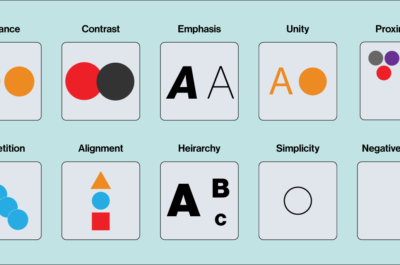Colors are all around us, and they play a significant role in our daily lives. Beyond their aesthetic appeal, colors have a profound impact on our emotions, perceptions, and even our behavior. The study of the meaning of colors, known as color psychology, delves into the ways in which different colors can evoke specific feelings and associations. From the warm embrace of red to the calming influence of blue, the spectrum of colors holds a rich tapestry of meanings and symbolism.
In the world of design and communications, we need to be acutely aware of the emotions and sometimes unconscious reactions our audiences will have to the colors we choose. So whether we are choosing colors for our new logo, theme colors for our website, or the colors we use in a PowerPoint presentation, we would do well to choose wisely.
1. Red: The Color of Passion and Energy
Red is often associated with strong emotions like love, passion, and excitement. It’s a color that commands attention and conveys a sense of urgency. Red can also symbolize danger or anger, which is why it is used for warning signs and stoplights. In some cultures, it represents luck and prosperity.
2. Blue: The Color of Calm and Trust
Blue is the color of the sky and the sea, and it often invokes feelings of serenity, tranquility, and trust. It’s no wonder that many corporate logos, like Chase Bank, Prudential, and Pfizer, use shades of blue to convey reliability and trust. Darker blues can also be associated with wisdom and intelligence.
3. Yellow: The Color of Joy and Optimism
Yellow is the color of sunshine, and it radiates warmth, happiness, and positivity. It’s often linked to creativity and energy, making it a popular choice for highlighting important information or drawing attention. However, too much yellow can be overwhelming or even evoke feelings of caution. Depending on the saturation, it can also be a bit difficult to work with in design.
4. Green: The Color of Nature and Balance
Green is the color of nature and the environment. It symbolizes growth, harmony, and balance. Many people find green to be a calming color, and it’s often used in healthcare settings to promote healing. On the flip side, it can also represent envy or inexperience.
5. Purple: The Color of Royalty and Luxury
Purple has long been associated with royalty, luxury, and elegance. It’s a color that exudes sophistication and creativity. In some cultures, purple is linked to spirituality and mysticism. However, it can also be seen as mysterious or even melancholic.
6. Orange: The Color of Energy and Enthusiasm
Orange is a vibrant and energetic color that combines the warmth of red with the cheerfulness of yellow. It’s often associated with enthusiasm, creativity, and fun. In marketing, orange is used to grab attention and create a sense of excitement. It’s no wonder the Amazon buy button is a light shade of orange. On the downside, it can be perceived as loud or aggressive in excess.
7. Pink: The Color of Love and Tenderness
Pink is a gentle and soothing color that represents love, affection, and compassion. It’s often associated with femininity and is used to convey a sense of nurturing and caring. However, in some contexts, overly bright or hot pink can be seen as juvenile or frivolous.
8. Brown: The Color of Stability and Earthiness
Brown is a down-to-earth color that symbolizes stability, reliability, and connection to the natural world. It’s often used in branding to create a sense of ruggedness or authenticity. However, it can also be seen as dull or unexciting.
9. Black: The Color of Mystery and Elegance
Black is a powerful and timeless color that represents mystery, elegance, and sophistication. It’s often associated with luxury and formality. You will often see black alongside silver or gold used by high end luxury brands. On the other hand, it can also symbolize negativity or mourning in some cultures.
10. White: The Color of Purity and Simplicity
White is a symbol of purity, simplicity, and cleanliness. It’s often used to create a sense of openness and space. In many Western cultures, white is the color of weddings and new beginnings. However, it can also be seen as sterile or cold.
Understanding the meaning of colors can be a valuable tool in various aspects of life, from personal fashion choices to branding and marketing strategies. While color psychology offers general guidelines about the emotions and associations tied to different colors, individual experiences and cultural contexts can also influence how we perceive and interpret colors. So, the next time you choose a color for your home decor, a presentation, or even your clothing, consider the emotions and messages you want to convey, and let the rich palette of colors guide you.






